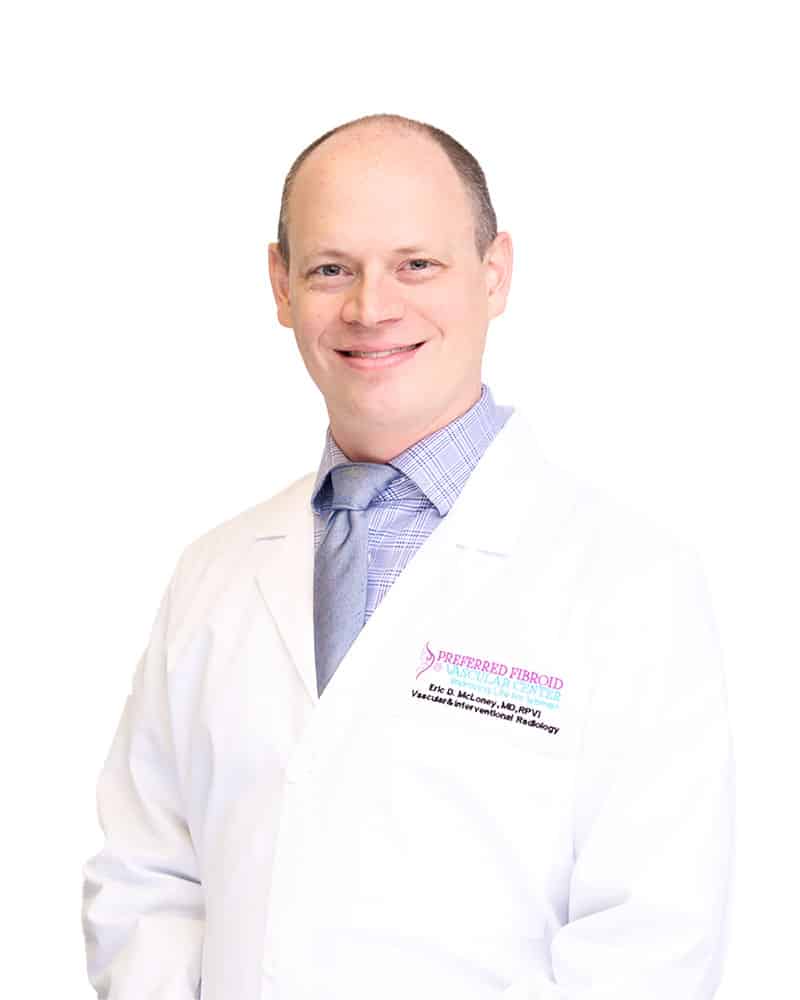Dr. Eric McLoney: A Leader in the Treatment of Fibroids in Cleveland
Today, we have the privilege of speaking with Dr. Eric McLoney, a leader in the field of radiology and women’s vascular health in Cleveland.

Can you share what drew you to specialize in women’s vascular health, particularly focusing on Uterine Fibroid Embolization (UFE)?
My journey into women’s vascular health was a natural progression born from my experiences during my residency and fellowship. I encountered various specializations, but the profound impact of UFE on improving women’s quality of life deeply resonated with me. The non-invasive nature of the procedure and its efficacy in providing significant relief to countless women are what inspired me to delve deeper into this specialty.
How did your experiences at institutions like University Hospitals in Cleveland and the Virginia Tech Carilion Clinic School of Medicine shape you?
Serving on the faculty of such prestigious institutions was both an honor and a tremendous learning experience. It allowed me to stay on the cutting edge of research, which is crucial in a field like interventional radiology that is continuously evolving. Teaching the next generation of doctors challenged me to refine my knowledge and also learn from the fresh perspectives my students brought to the table.
What motivated you to specialize in Uterine Fibroid Embolization (UFE) and dedicate yourself to the treatment of fibroids?
I realized that many women suffer from the discomfort and complications that fibroids induce, often disrupting various aspects of their daily lives. Yet, the solutions available, particularly surgical options like hysterectomies, can be daunting, potentially leading to significant emotional and physical implications, including affecting a woman’s fertility and hormonal balance.
UFE emerged as a beacon of hope in this landscape. It offers a minimally invasive, yet highly effective solution that spares the uterus, reduces recovery time, and addresses the root of the problem by targeting the fibroids themselves. This balance between efficacy and preservation is what drew me towards specializing in UFE.
How does the Uterine Fibroid Embolization (UFE) procedure minimize the impact of fibroids, and what can a patient expect during and after the process?
Uterine Fibroid Embolization (UFE) is a strategic approach to mitigating the discomfort and complications caused by fibroids without resorting to invasive surgery. The procedure involves the interventional radiologist introducing a catheter through a small incision in the patient’s groin or wrist. Using real-time imaging for precision, the catheter is directed toward the fibroids within the uterus. An embolic material, composed of tiny particles like polyvinyl alcohol (PVA) sponge fibers or microspheres, is then injected. These particles are designed to clog the arteries supplying the fibroids, thereby blocking the flow of oxygen-rich blood and essential nutrients to these non-cancerous tumors, leading to their reduction or elimination.
The procedure is minimally invasive and conducted under sedation, ensuring the patient’s comfort. It typically lasts between 30 minutes and 4 hours. Afterward, patients can expect a relatively quick recovery period, often returning home the same day and resuming normal activities within a week. Immediate or significant reduction in symptoms like heavy menstrual bleeding is common, usually noticeable within three months post-procedure. Minor side effects such as cramping or spotting may occur initially but are part of the normal recovery process.
Who are the ideal candidates for Uterine Fibroid Embolization (UFE), and how does it compare to other surgical options like hysterectomy?
UFE is particularly suitable for women who seek relief from fibroid symptoms but are unable or unwilling to undergo major surgical interventions such as a hysterectomy. This preference could be due to various reasons, including the desire to avoid the longer recovery times associated with surgery, preserve the uterus for future pregnancy, or maintain hormonal balance.
The procedure is a viable alternative for those who need a quicker return to daily activities, including work, as the recovery time is significantly shorter compared to more invasive surgeries. UFE focuses on treating the fibroids while leaving the uterus intact, which is an essential consideration for women who may contemplate pregnancy in the future. In contrast, a hysterectomy involves the removal of the uterus, which definitively precludes the possibility of future pregnancies and may lead to early menopause or other hormonal changes.
It is crucial for interested candidates to consult with their healthcare providers to discuss the viability of UFE based on their unique health circumstances and fertility considerations. The specialists at facilities offering UFE, such as the Preferred Fibroid and Vascular Center, can provide comprehensive consultations to determine if UFE is the optimal solution for an individual’s specific needs.
Can you share a bit about your interests outside the medical field?
I believe a well-rounded life outside of work enhances one’s professional performance. I’ve always been passionate about music; it’s a fantastic creative outlet for me. I’m also involved in martial arts, which keeps me physically and mentally agile. Additionally, I love attending live theater performances—it’s exhilarating to feel the energy and emotion only live acting can convey.
An informative and caring process
Our patients want to make informed decisions about treatment with a trusted, world-class medical group that supports an effective pain management plan.
We have responded with processes that are minimally invasive and limit your loss of work and personal time. Our experienced physicians and staff keep you informed at each step of the process.
We always provide a personalized evaluation, treatment, and pain management plan. Our support continues after treatment with a comprehensive follow-up plan.
